Round-UpKnow Your Rolex: Elements That Make It The World’s Most Popular Watch Brand
From the cases and straps, to the metal and glass, get acquainted with all the elements of a Rolex timepiece that make the brand what it is
May We Recommend
If you own a Rolex, or ever plan to own one, you’d want to be familiar with a couple of aspects that the Swiss watchmaking giant incorporates in their watches. It’s the various parts of a timepiece that build up each distinctive model. From the archetypal Datejust and the classical Cellini, to the sporty Submariner and the highly complicated Sky-Dweller, all Rolex watches have elements that are extremely identifiable. While the Oyster case is seen in most Rolexes, the Cerachrom bezels are seen in a few. While the Oyster and Jubilee bracelets can be seen in steel, a President bracelet can only ever be found in gold or platinum. While a day display can be seen behind flat sapphire crystal, a date aperture will not be seen without a Cyclops lens. The design principles that the brand follows are definitive. Rolex is one brand with which the more in depth you explore it, the deeper your affinity towards it gets. And it might also help you distinguish between a genuine Rolex and a cheap replica.
The Oyster Case
Let’s start with the element that gave us the world’s first ever waterproof wristwatch, the Oyster case. It was invented in 1926. Rolex patented a system of screwing down the bezel, caseback and winding crown on the main body of the case, built from a single block of metal. The sapphire crystal is hermetically clamped tight by the bezel or a sealing ring. This hermetic construction guarantees waterproofness of all Rolex Oyster watches to at least 100m. The screw-down caseback of the Oyster case features fluting, which makes the case impossible to open without a special tool that is made available exclusively to authorised Rolex watchmakers, so as to ensure that only qualified service personnel get to access the movement inside.
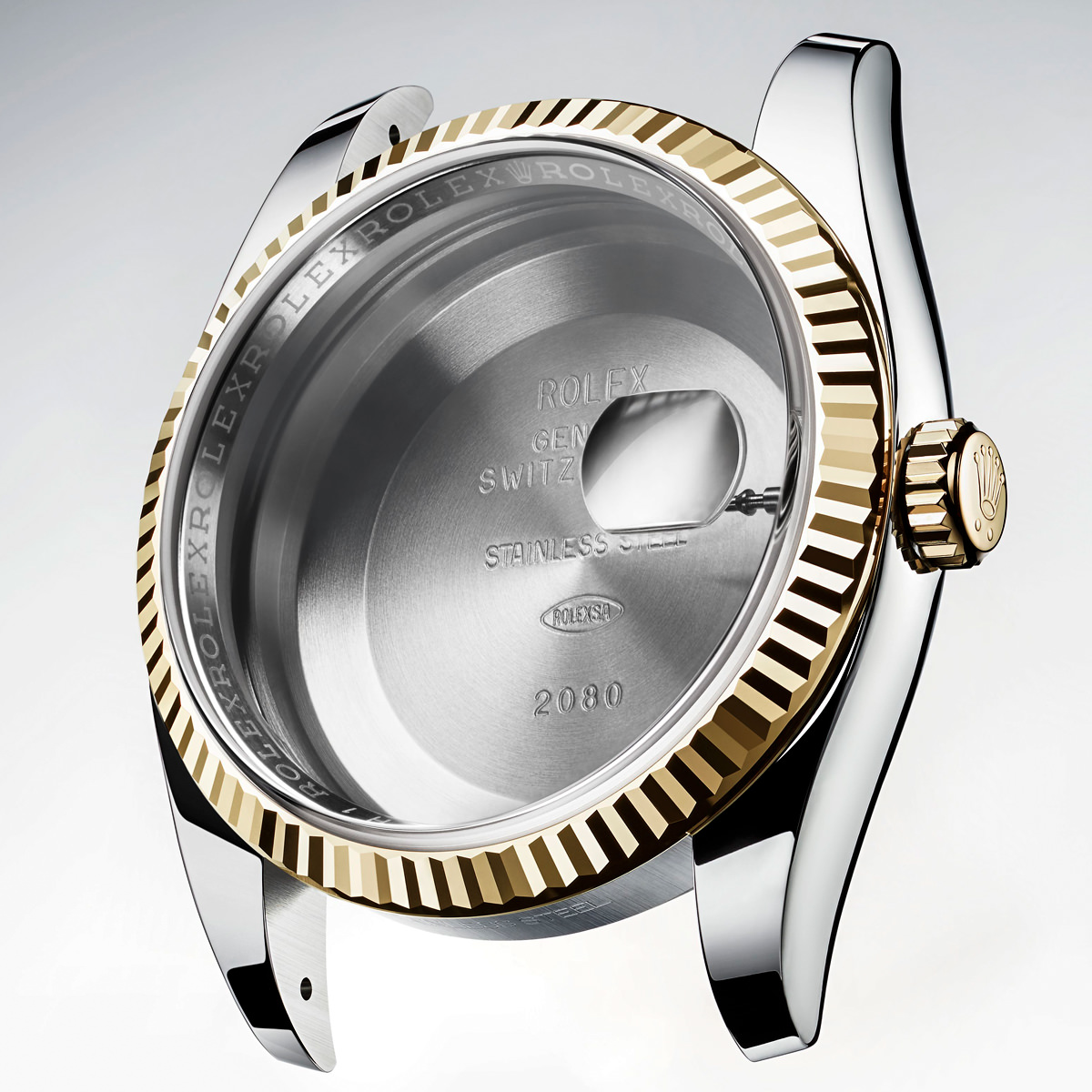
Special professional watches such as the Submariner and Rolex Deepsea models are in fact water-resistant to greater depths—300m and a whopping 3,900m, respectively. This waterproofness is tested by subjecting the Oyster case to pressures 10 per cent greater than that found at the guaranteed depth, and 25 percent for diver’s watches.
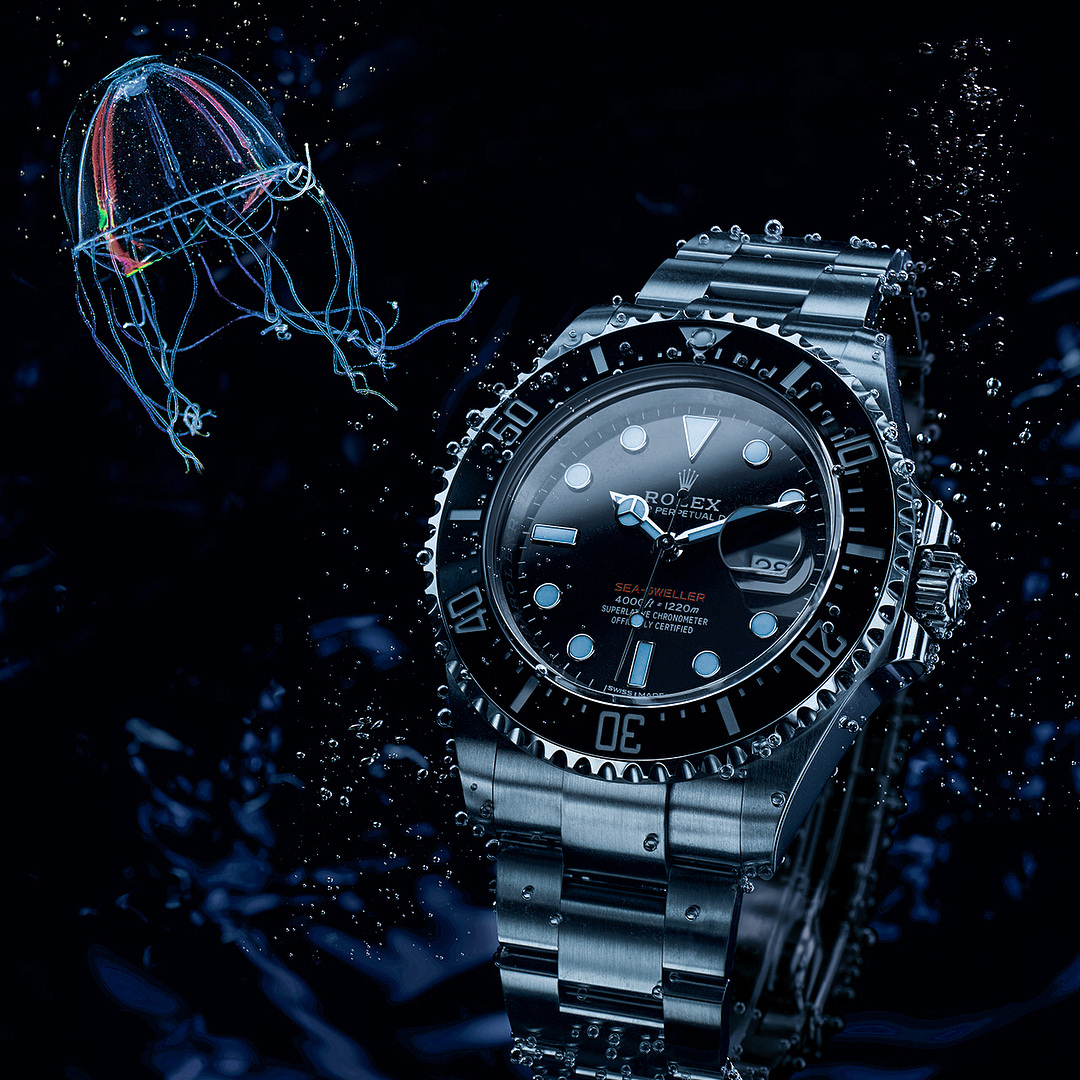
The first big test was in 1927, when Rolex tested their first Oyster Watch with Mercedes Gleitze, the Englishwoman who swam across the English Channel. Even 10 hours in the water didn’t affect the watch’s impeccable performance.
The Rolex Crowns
To make a watch completely waterproof, the crown plays a key role and Rolex recognises that. The crown interacts directly with the movement, so whether it’s used to adjust a feature or to wind the watch in manual-winding models, the screw-down crown must be as protected as the movement is within the case.
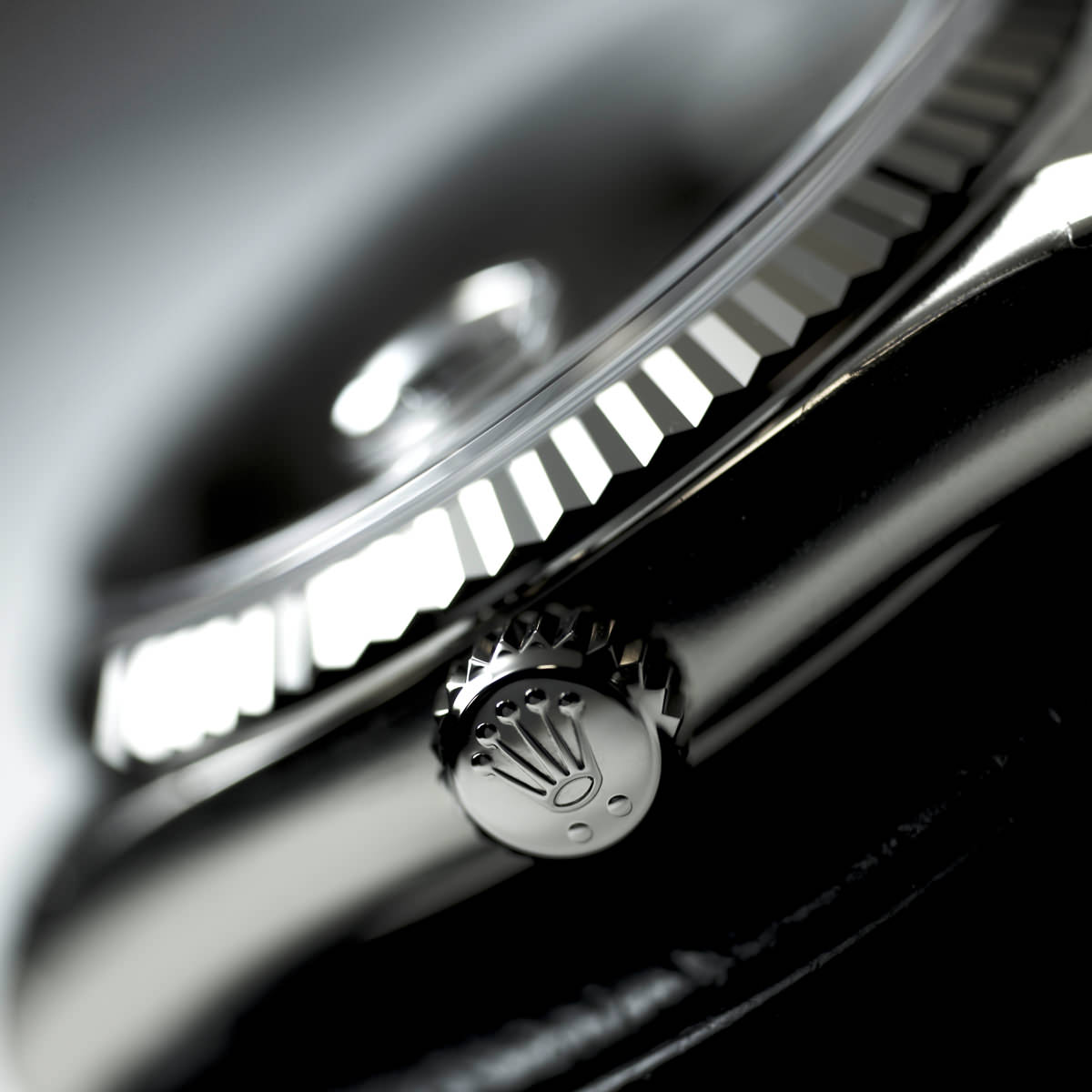
All the current Oyster models come with either the Twinlock or the Triplock crown, while the Cellini models generally have a flared screw-down crown. The Twinlock system features two sealed zones, and is used in watches that offer a 100m water resistance. It can be identified by the two dots or line below the Rolex logo on the crown.

The Triplock system goes a step further than Twinlock, with its third sealed zone. It is used in watches that offer a water resistance of 300m or more, seen in the Submariner, Sea-Dweller and Rolex Deepsea watches, among others. It can be identified by three dots on the crown.
The Bracelets And Clasps
Oyster Bracelet
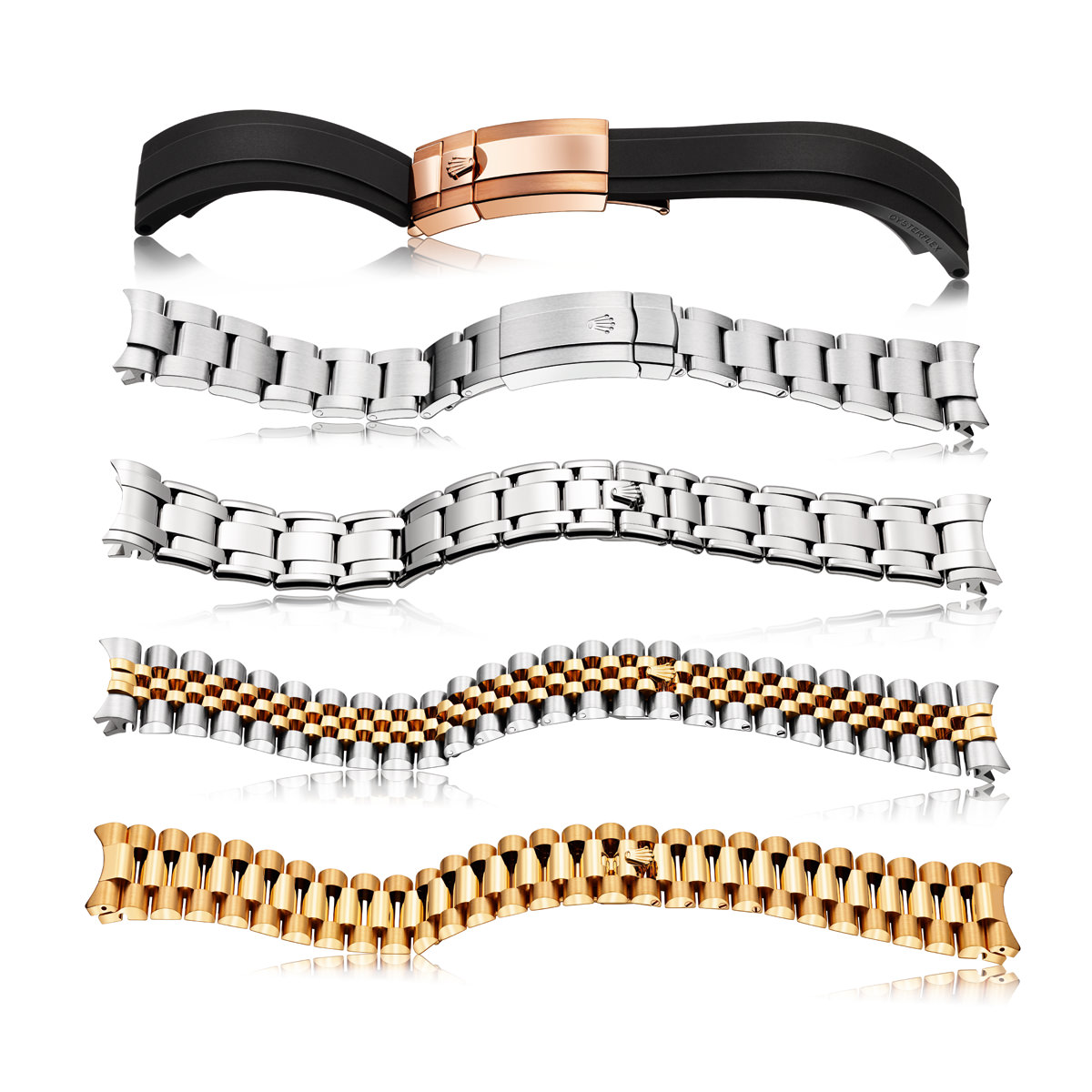
The iconic Rolex bracelet, the most basic design. The Oyster was first introduced at the end of the 1930s. Comprising three broad and flattened links in a row, this bracelet is seen in most types of Oyster watches. While it does make a presence in some classic Rolexes such as the Oyster Perpetual and Datejust, it is the one bracelet seen on all professional watches such as the Submariner, Explorer, Cosmograph Daytona and Yacht-Master. It could feature either of these Rolex clasps—the Oysterclasp or Oysterlock.
Jubilee Bracelet
A finer mesh of a bracelet, the Jubilee strap is the one with five links in a row. What distinguishes the Jubilee bracelet, is its refined look. It was introduced with the unveiling of the Datejust in 1945, making the watch look elegant and serving the purpose of its aesthetic invention. The Jubilee is generally fitted with an Oysterclasp or the Oysterlock.
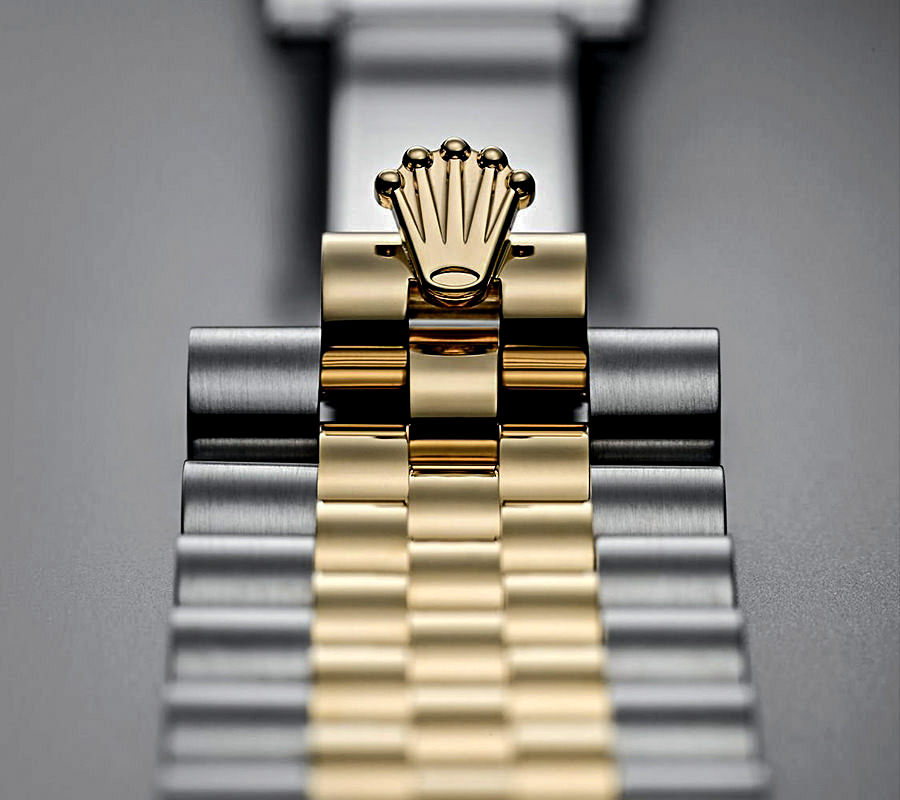
President Bracelet
The name might give you a hint. The President bracelet is of a certain status, and is made only in precious metals – yellow, white or Everose gold, or in platinum. The design is a three-link format, but the links are narrower than the Oyster links, and they are semi-circular in shape. This exclusive bracelet was first used in 1956, with the launch of the Day-Date, a model that still enjoys its maximum presence. It is always fitted with the concealed Crownclasp.
Oysterflex Bracelet
Introduced with the 2015 Yacht-Master watch, this bracelet has a super-elastic metal blade that is over-moulded with a high-performance elastomer. The inner side of the strap has a patented cushioning that stabilises it on the wrist, making for added comfort and breathability. This bracelet is usually seen with an 18-carat gold Oysterlock safety clasp.
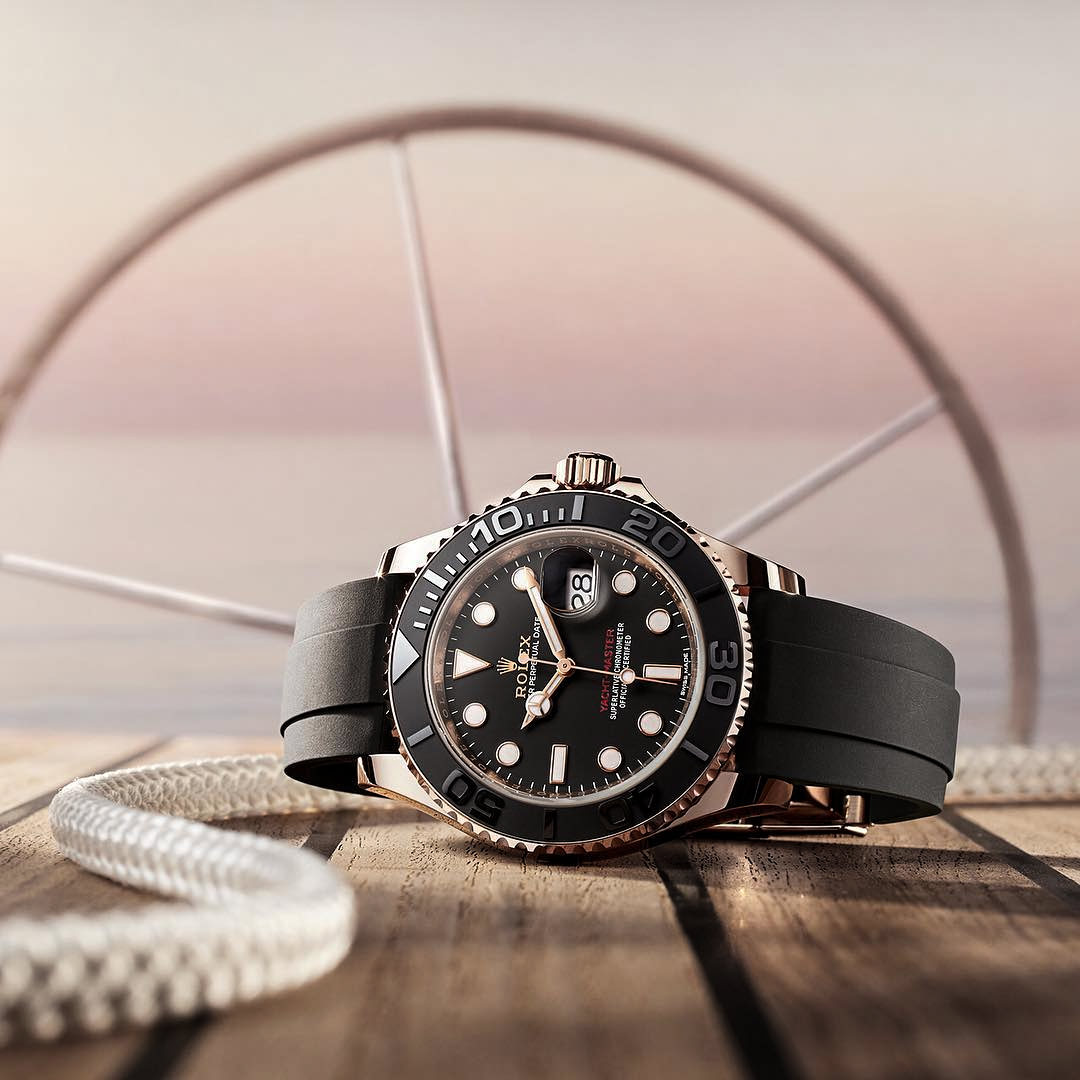
Oysterclasp
This is the simplest clasp on a Rolex bracelet. It can be folded shut and opened using a lever that ensures that it closes securely, while also making it easy to open.
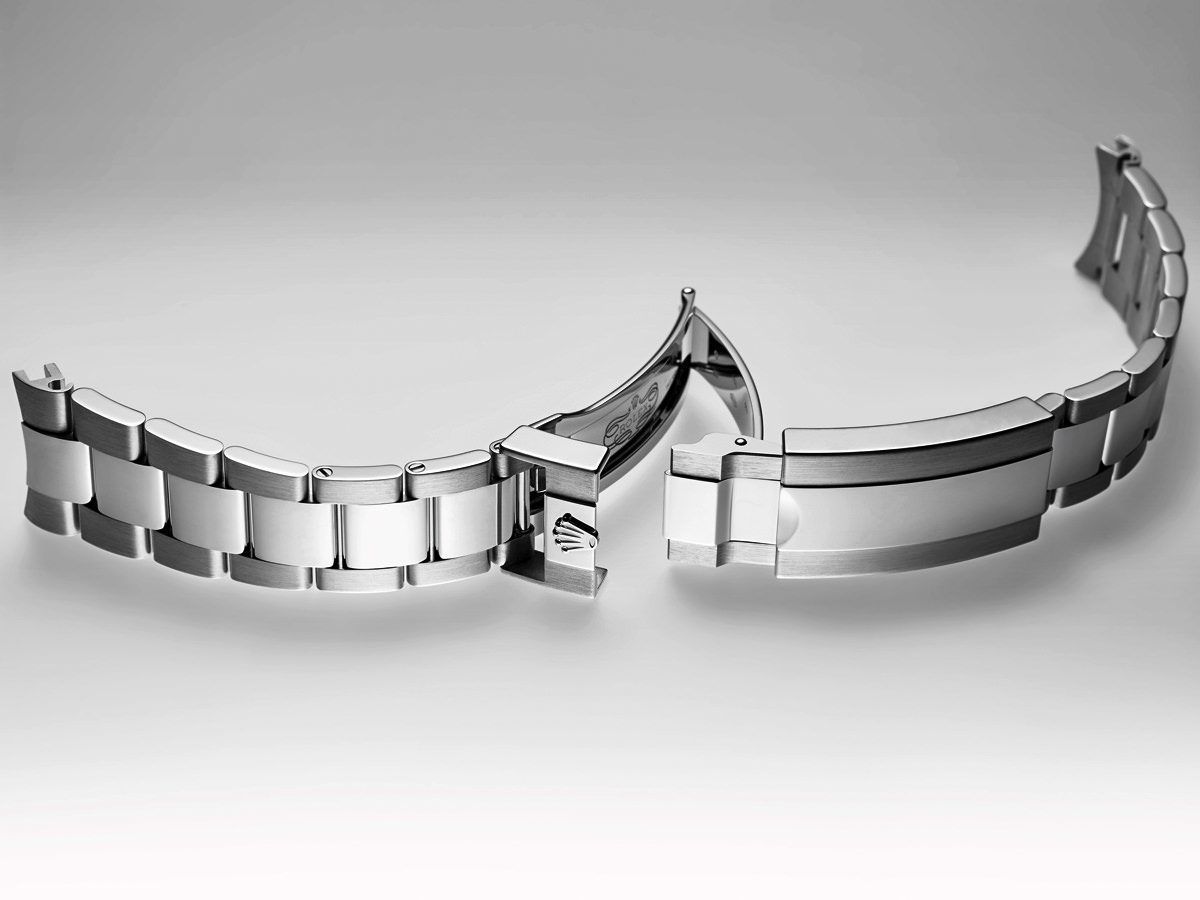
Oysterlock
This is a more sophisticated clasp, with a safety catch that offers additional security. A snap-fit lever is used to open and close the Oysterlock with minimum effort. This feature is what makes this a clasp seen on several of the professional watches.
Crownclasp
This is the most discreet (and fancy) of the lot, which, when shut can barely be seen. The Rolex crown-shaped lever is used to open and close the strap. The Crownclasp is generally seen in dressier models of the Datejust, Day-Date or Pealmaster, mostly used on a Jubilee or President bracelet. A version that could be used on a leather strap was introduced in 2013.
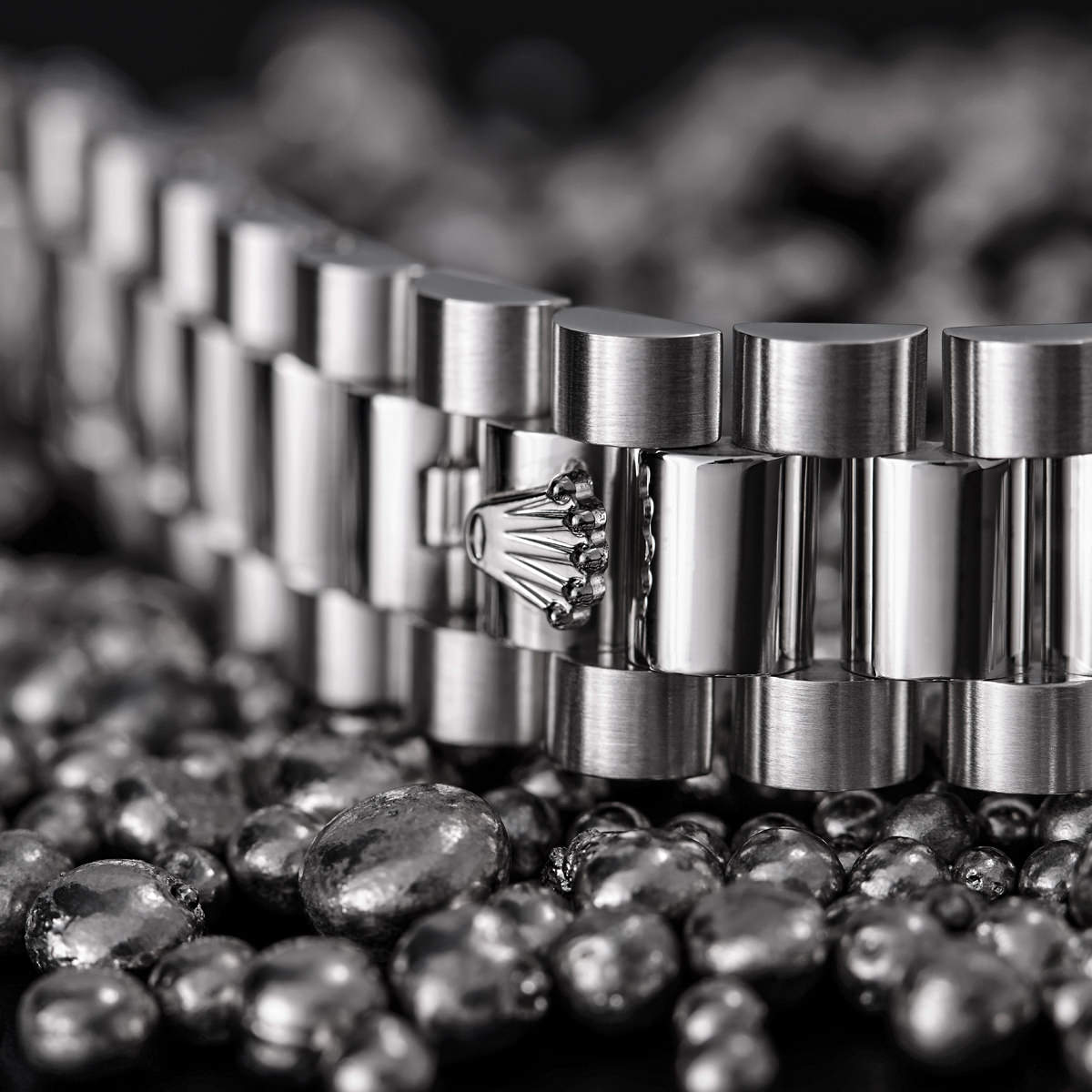
Easylink Comfort Extension
Easylink is a system that is used to adjust the length of a bracelet by about 5mm. The Easylink feature seen in diver’s watches from Rolex are even more advanced. While it allows one to wear the watch comfortably on top of the diver’s suit, it also has added mechanisms. The Glidelock fine-adjustment system is used to adjust the strap by 20mm, and the Fliplock extension link folds out to extend the bracelet by 26m(m), so the watch can be worn over diver suits of varying thickness. The Glidelock is seen in Submariner and Sea-Dweller models, while the system in a Deepsea can be adjusted without having to take off the watch.
The Rolex Bezels
Fluted and Smooth bezels
The more classic watches from Rolex, including the Datejust and the Day-Date generally feature simple bezels on their cases. These bezels are either smooth, for a more minimal look, or they are fluted, for a touch of textural splendour. On the other hand, the classical Rolex Perpetual 1908 comes with bezels featuring domed and fluted parts.
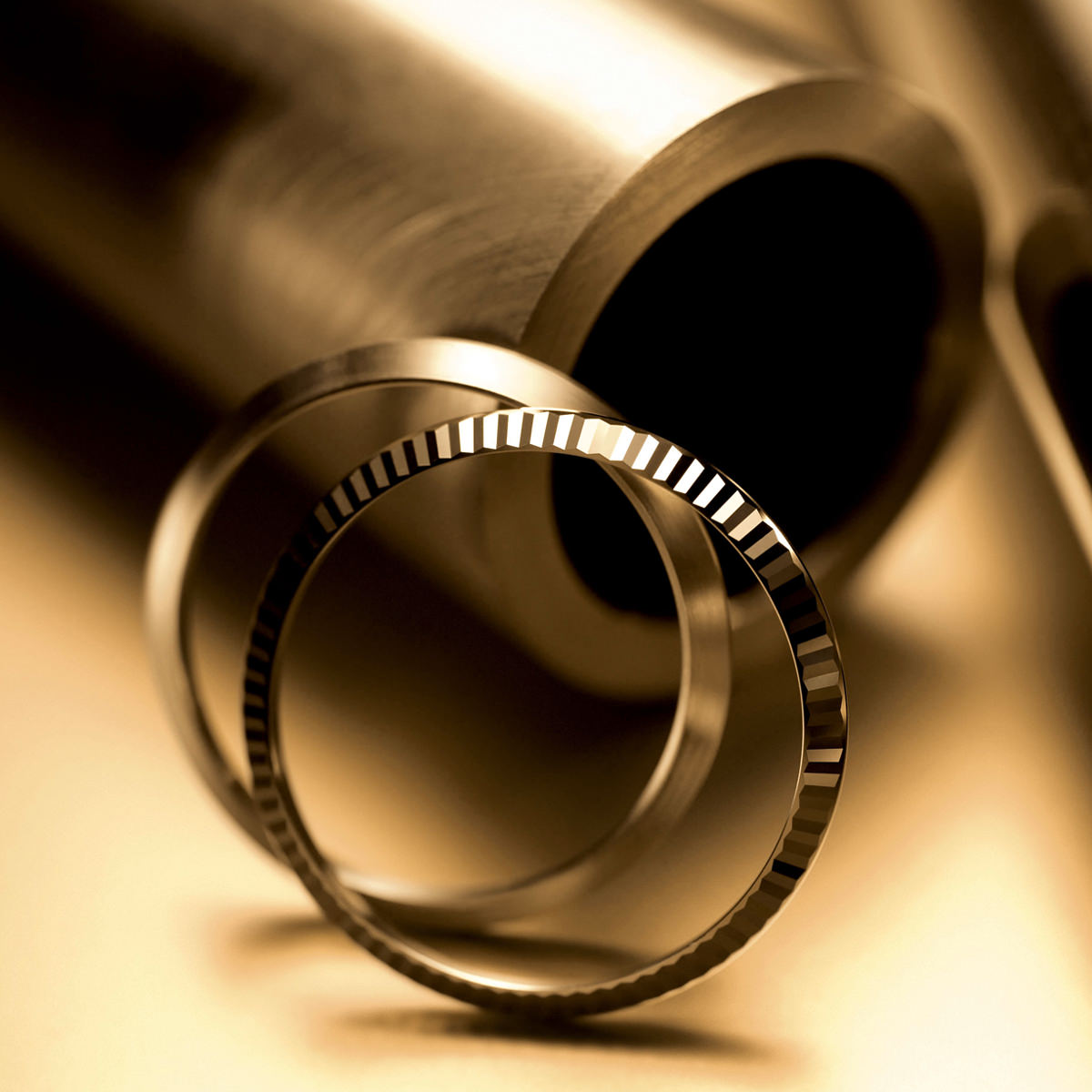
Cerachrom Bezel
As the name suggests, this is a bezel that is made partly of ceramic. It was introduced in 2005, first seen on the GMT-Master II. It is made from a high-tech, hard ceramic that is corrosion-resistant, ‘virtually impervious to scratches’, and whose colour will remain unaffected by ultraviolet light. The numerals and other markings are usually moulded in ceramic and then coated with metal using the PVD or physical vapour deposition process, for enhanced legibility of markings on tachymeter scales and such. While the metal markings can be gold or platinum, the colour of the ceramic itself is either black, blue or green, depending on the watch it’s on. Some newer versions of the GMT-Master II also feature the two-tone Cerachrom bezel in blue and black or blue and red.
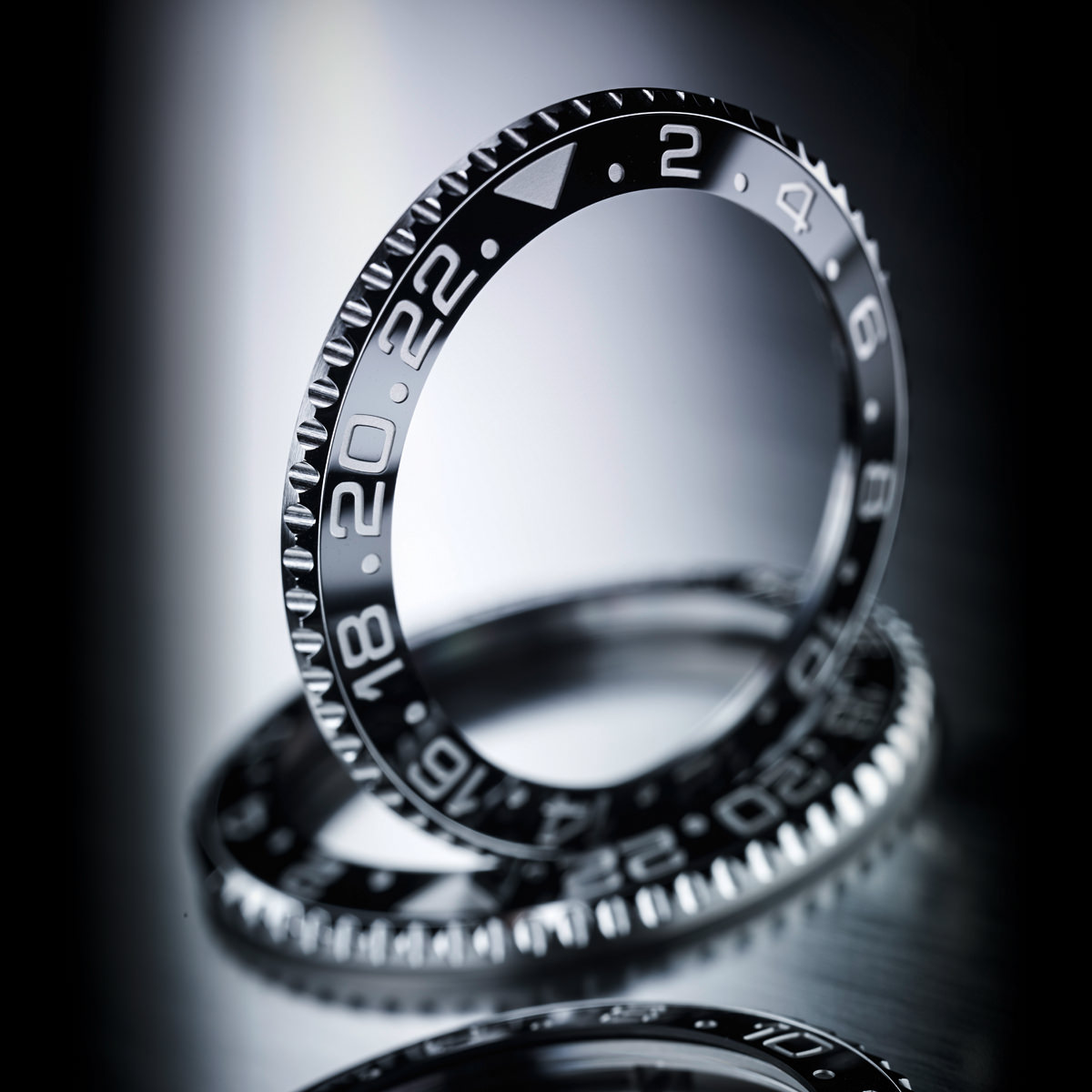
Today, the Cerachrom bezel is also seen in Rolex’s professional watches such as the Yacht-Master, Yacht-Master II, Submariner, Sea-Dweller and the Rolex Deepsea. A monobloc Cerachrom bezel is also seen on the Cosmograph Daytona
Cyclops Lens
“I am convinced that the new tropical case with the new crystal, and the optical magnification, will give us something new,” said Rolex founder, Hans Wilsdorf. His words directly or indirectly referred to the ‘optical magnification’ of the date display on Rolex timepieces, which was achieved by the introduction of the Cyclops lens on the watch glass. It was patented in the early 50s, and was first seen on a 1953 Datejust model. One of the most remarkable visual elements on the face of a Rolex, it is now often taken for granted, but the Cyclops lens was ground-breaking back in the day.
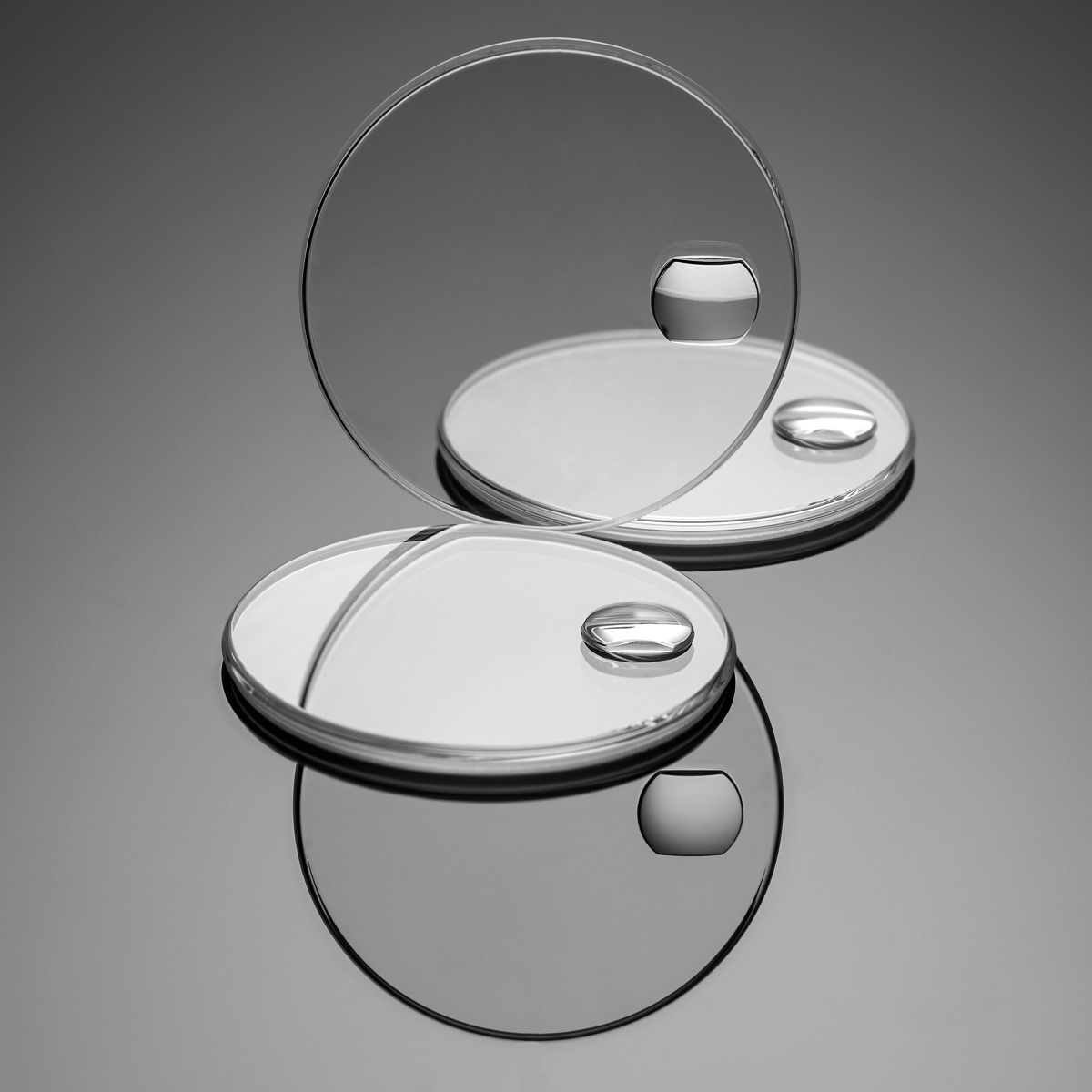
Initially, the lens and crystal together were a single piece, made of Plexiglas. Since the 1970s, the glass was made in sapphire crystal and soon after, the Cyclops lens was also crafted out of sapphire. The cyclops lens made its presence on the GMT-Master and Day-Date watches too, when they were launched in the mid-50s.
Case Materials—Metals, Alloys And Combinations
Yellow, White, and Everose gold
Rolex is the only watch brand that casts their own gold, in their own foundry, where noble metals are melted at over 1,000°C. The molten metal is cooled to form small beads, which undergo another round of fusion and are transformed into gold rods. These rods then go through several processes, under the expertise of highly-skilled personnel, to acquire all forms needed to manufacture the metal components.
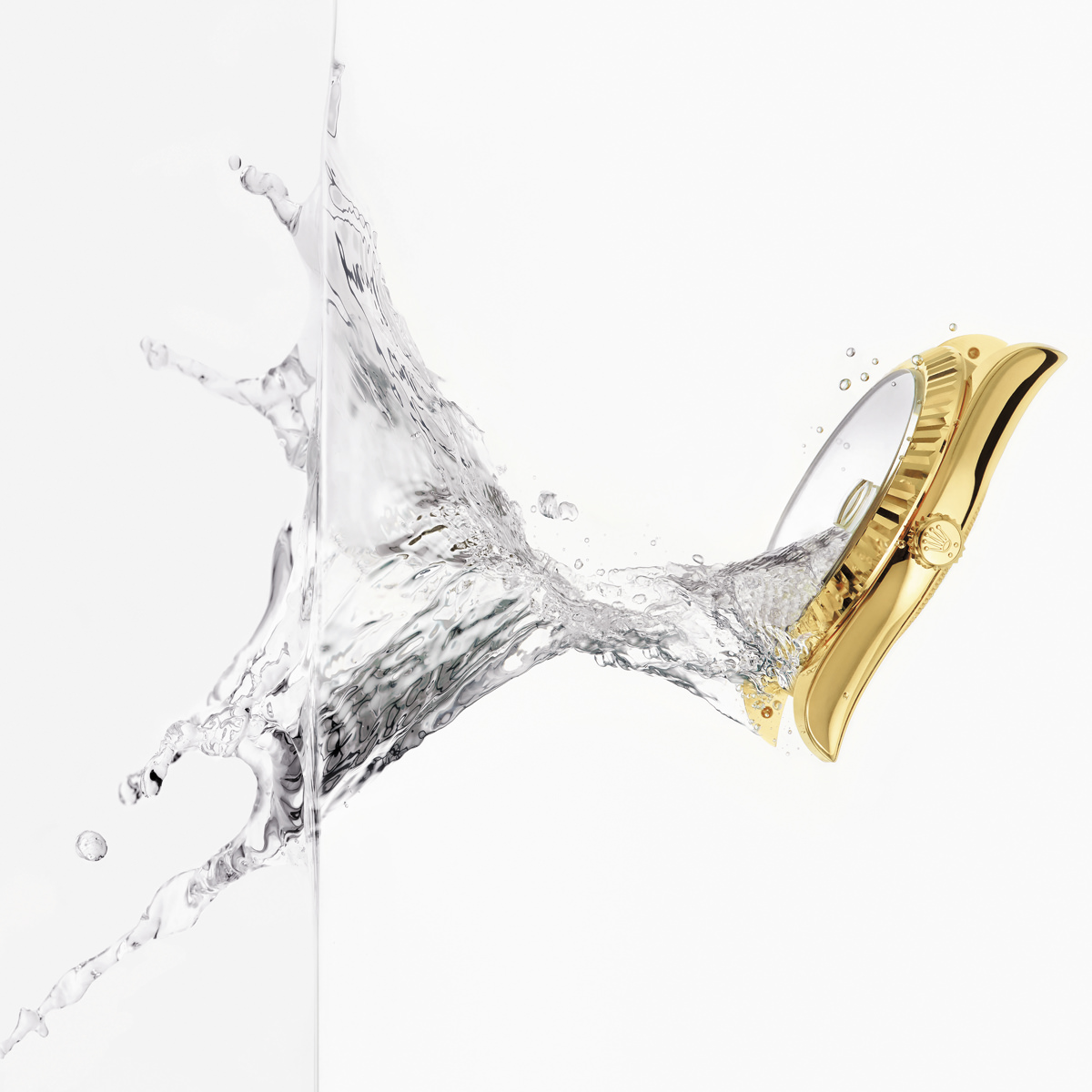
Everose gold is a patented Rolex alloy, which is the by-product of a secret combination of metals that results in the exquisite, distinctive, and consistent pink gold tint that Rolex is known for. While the other gold – white or yellow – used by Rolex is not a product of a secret combination, it still follows the specific and perfected art of metal casting in Rolex’s very own foundry.
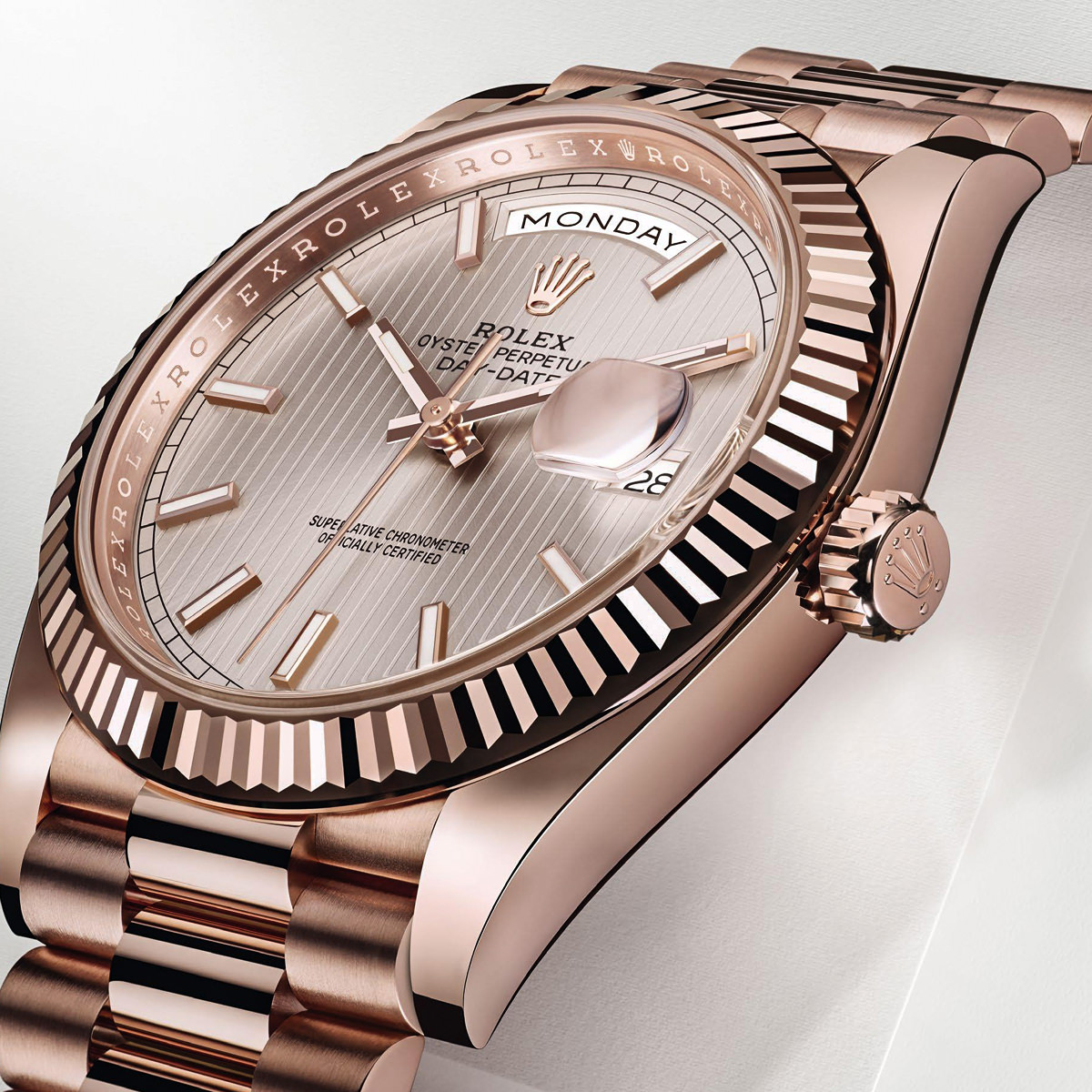
904L Steel
A pioneer in the use of 904L steel in watches, Rolex opted for this special alloy, rather than the standard stainless steel used in watchmaking, because of the added durability and corrosion resistance offered by 904L steel. In fact, these qualities of the special steel make it the alloy of choice even for the aerospace and chemical industries. Aesthetically even, 904L steel, with a final finish, reveals an exceptional sheen that goes really well when paired with white, yellow or Everose gold in the Rolesor models.
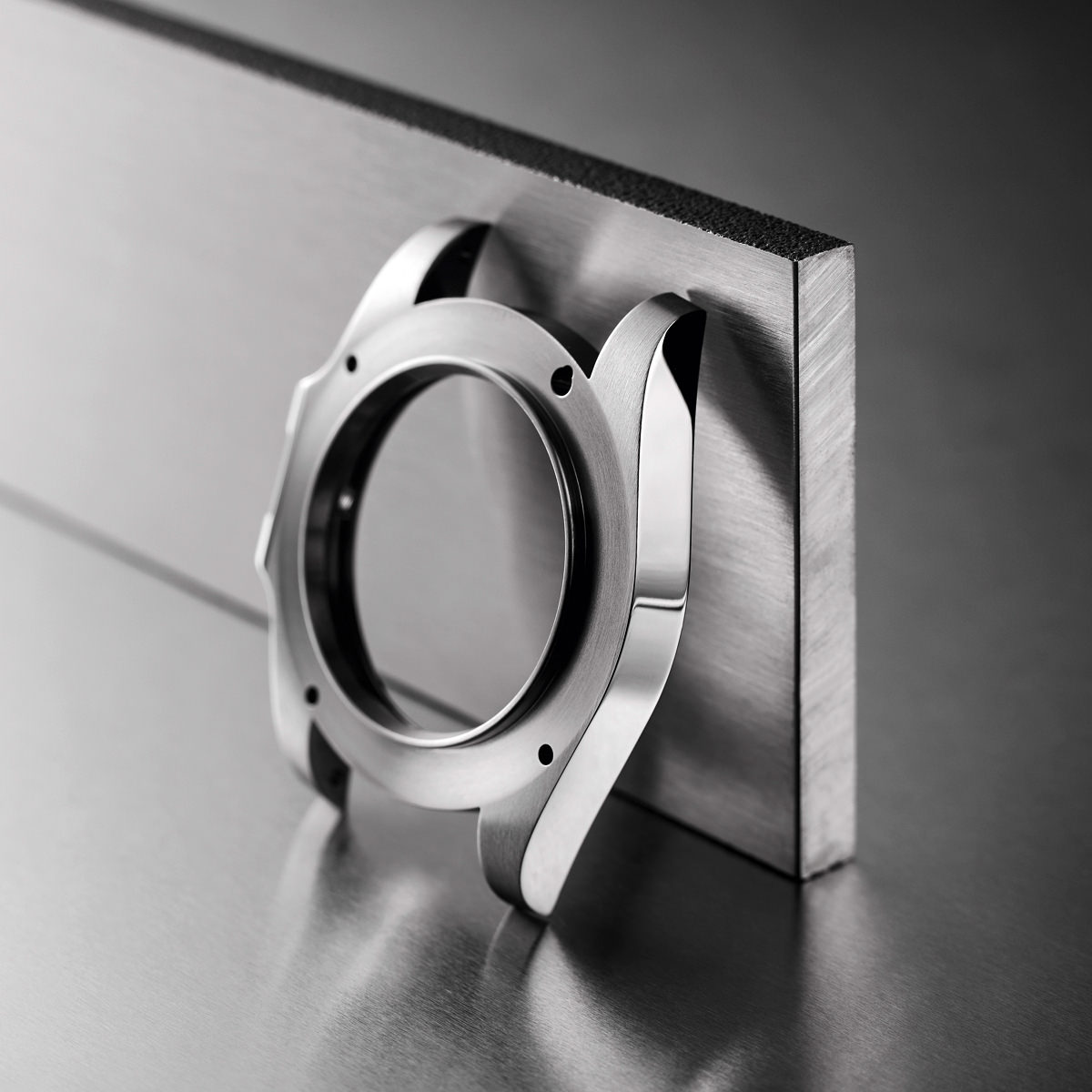
Rolesor
They call it a ‘marriage of gold and steel’, and that’s exactly what Rolesor is – Rolex’s signature combination of 904L steel with gold, in white, yellow or Everose. Patented by Rolex in 1933, the separation of metals in Rolesor is such: the bezel, crown, and centre links of the bracelet are made of 18-carat yellow or Everose gold, while the middle case and the outer bracelet links are in 904L steel. In white Rolesor timepieces, only the bezel is in white gold. Appearing first in the 1948 edition of the Datejust, the combination was an instant success.
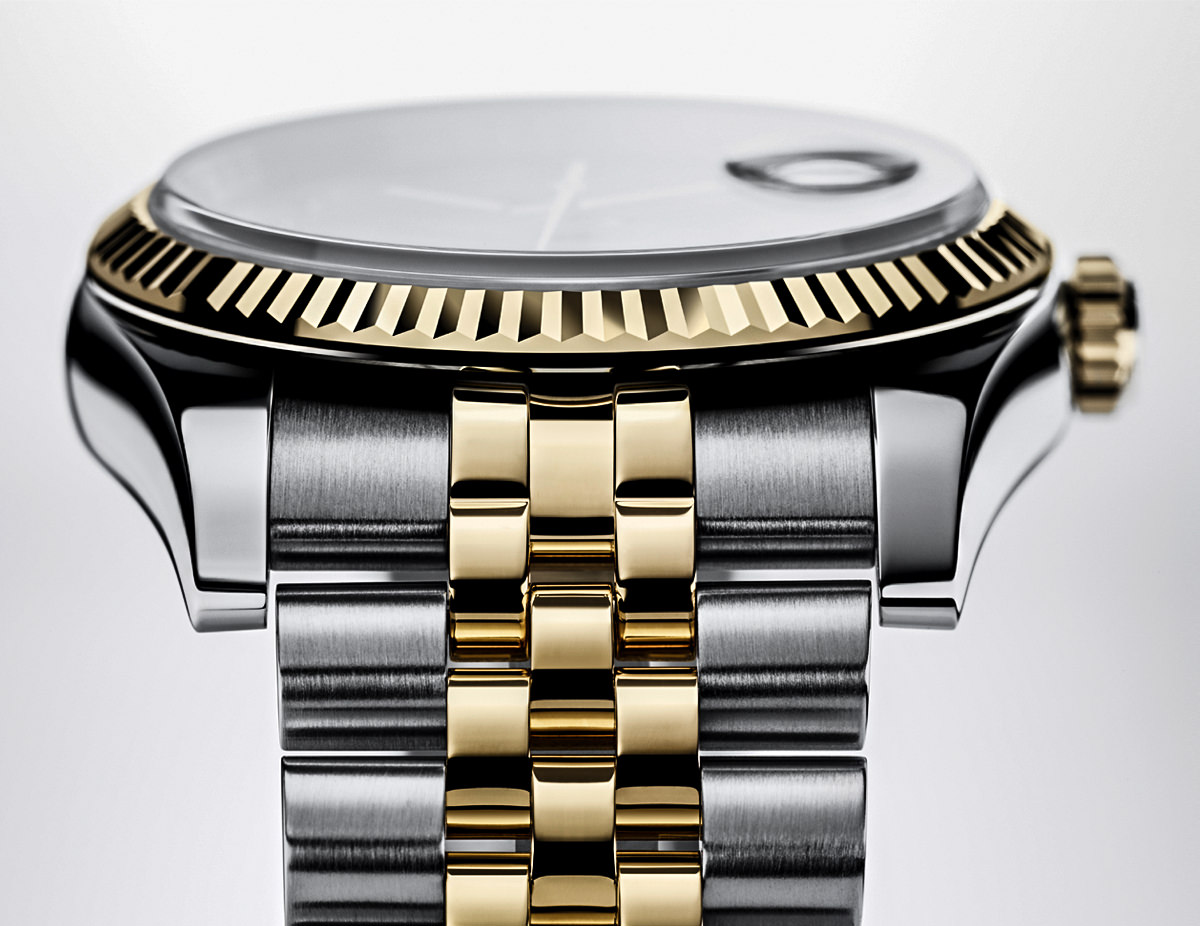
950 Platinum
Rare, precious, luminous, and seen as the ultimate metal of prestige, used widely in very precious jewellery and high-end watches. Platinum is one of the densest and heaviest metals in the world, known for its corrosion resistance. Ironically, the metal also is also soft and highly malleable, making it a task to polish it. Hence, those at Rolex who make the platinum cases and bracelets have to be highly skilled and extremely qualified. Rolex uses 950 platinum, which includes a very small proportion of ruthenium, another metal from the platinoid family. This 950 platinum is used in the making of the platinum Day-Date, which Rolex call the ‘Watch of prestige’. It is also seen in the Cosmograph Daytona. In case you can’t place the brilliant sheen of the metal, the other distinctive highlight to look out for is the ice blue dial.
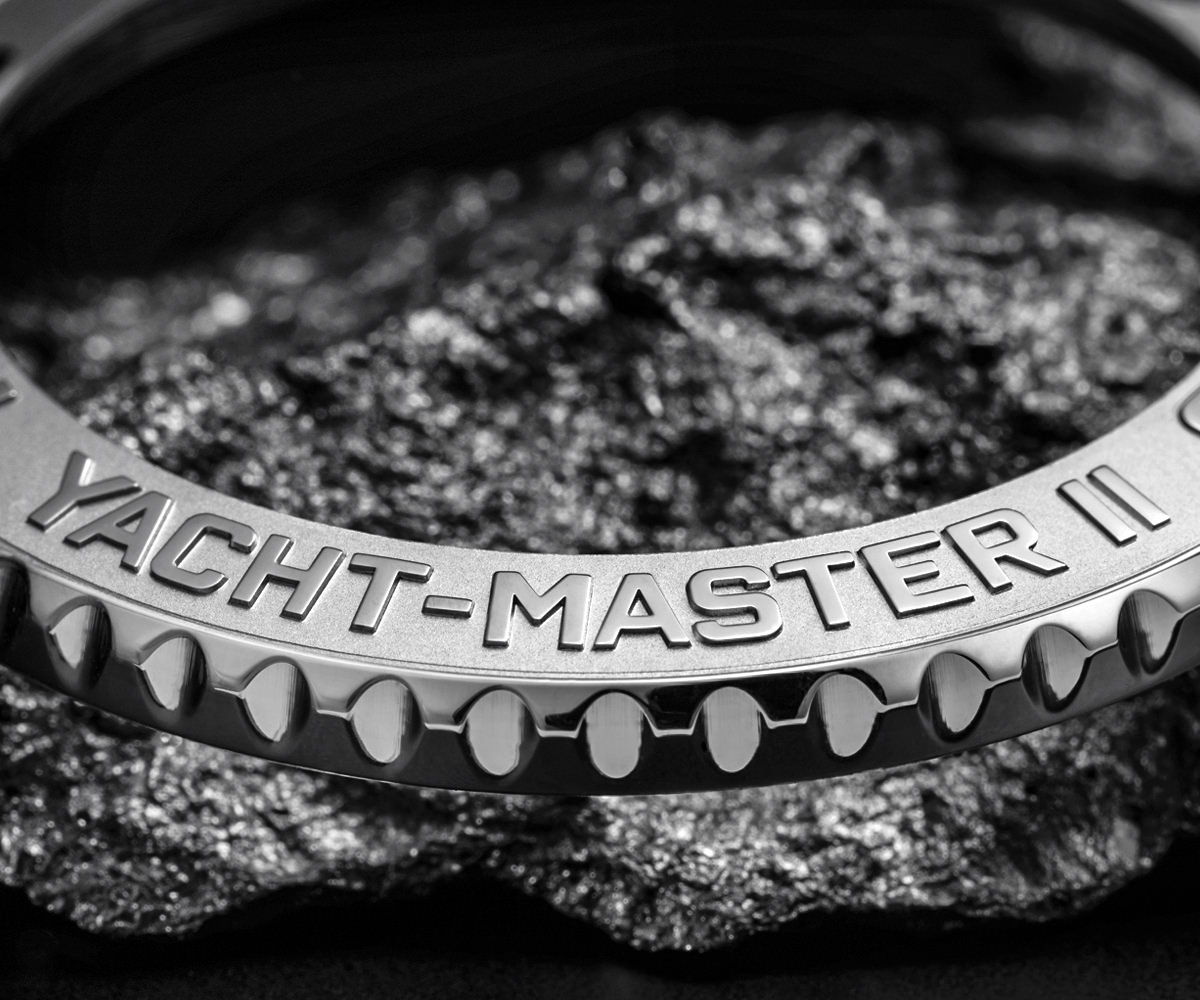







I am looking for a replacement clasp for my Yacht Master gold and stainless steel.
Hello Armin,
Thank you for your comment. Ethos might just be able to help you with that. Please feel free to call the Ethos luxury watch helpline and speak to one of the consultants, and they’ll direct you as required. The numbers are +91 8725028882 or 8725016301, and the helpline is open between 11:00am and 6:00pm, Monday to Saturday.
For your information, Ethos has plenty of other special offers. Stay safe and shop from home on EthosWatches.com.
Thank you for reading!
The Watch Guide